#kodak professional europe
Explore tagged Tumblr posts
Text

Ca la Llarga / Agosto de 2024.
#fotografia #photography #visualart #fotodeautor #35mm #fotoanalogica #analogphotography #photoargentique #vmfoto #intimité #intimität #intimacy #mifotodiario #myphotodiary #petiteshistòries #pequeñaahistorias #littlehistories
#photographers on tumblr#photography#photographer#35mm#35mm color photography#35mm photography#kodak 35mm#35mm color film#foto analogica#analog society#fotografia analogica#analog photography#analog#foto analógica#photo argentique#argentique#kodak professional europe#kodak portra 400#kodak#kodak film#my photo diary#my photo album#journal intime#intimité#intimidad#intimacy#visual art
13 notes
·
View notes
Text

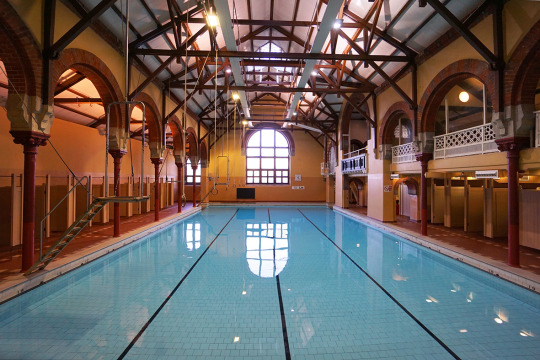
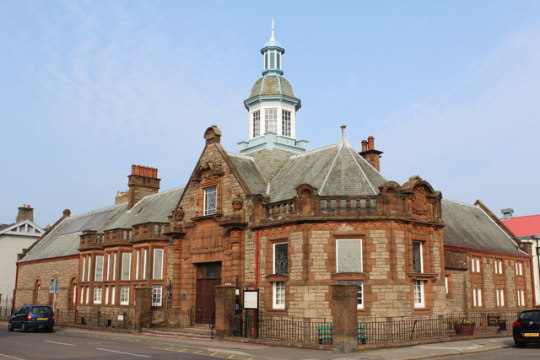

The distinguished architect John Burnett died on July 2nd 1938 at Colinton, Edinburgh.
Burnett designed buildings the length and breadth of the British Isles and on the continent of Europe and as far afield as South Africa.
John Burnet was born a soldier's son at Craighead House, Kirk O' Shotts, and trained initially as a carpenter. After becoming a Clerk of Works, he set up as an architect specializing in modest churches and houses in the Italianate and Classical styles, and large-scale commercial buildings and hospitals in the Italian Renaissance, Baronial and Gothic styles.
One of his first undertakings in Glasgow was the Royal Institute of the Fine Arts in Sauchiehall Street, which was won by competition. Other notable buildings there are the offices of the Clyde Trust, the Athenaeum, the Botanical Department and extension of the University, the Pathological Institute, the Barony Church.
In Edinburgh he designed the Professional and Civil Service Stores, George Street, the business premises of R. W. Forsyth in Princes Street, which later housed Burtons for many years, and in Scotland and England generally many public, ecclesiastical and domestic buildings. He was also architect for the Edinburgh International Exhibition of 1906.
Important commissions came to him from London and to London he devoted the latter part of his life, the firm, of which he was senior partner, being known as Sir John Burnet, Tait & Lorne. He had the honour in 1905 of being entrusted by the Government with the important additions to the British Museum, now known as the King Edward VII. Galleries.
Among his numerous London designs are the Institute of Chemistry in Russell Square, the Kodak building in Kingsway, Adelaide House and Vigo House, and the Second Church of Christ Scientist. He was the chief architect in Palestine and Gallipoli for the Imperial War Graves Commission.
The professional esteem with which Sir John was regarded in Britain may be expressed by the words used in connection with the conferring of the Gold Medal of the Royal Institute of British Architects in 1923, ‘‘ Few architects living can compare with him either in quantity or quality of output, and fewer still may be said to have had as pervasive an influence on the work of their own time.”
In France he had received both bronze and gold medals at the Salon and was a corresponding member of the Institute of France and of the Société central des Architectes Francais. He had the same relation with the American Institute of Architects.
Knighted in 1914, Sir John was a member of both the Royal Scottish Academy and the Royal Academy. He was an Honorary LL.D., of Glasgow and Fellow of the Royal Institute of British Architects, of the Royal Society, Edinburgh, and of the Royal Society of Antiquaries.
Though he took fewer commissions personally, Burnet worked into his late seventies – he designed the famous Unilever building on London in 1933 - before he eventually retired, spending his final years at Colinton in Edinburgh. He died at home at the age of 81 on this day, 1938, he is buried at Warriston Cemetery.
Pics are the beutiful Drumsheugh Baths in Edinburgh, the old Public Library and Museum, Capbelltown and the former Clydesdale Bank Headquarters, St Vincent Place, Glasgow.
28 notes
·
View notes
Text


Nicholas II, Empress Alexandra Feodorovna, their children and photography
Photography became truly popular across Europe and the US in the early 20th century as photo equipment became smaller, less complicated, and more affordable. Photography was, without a doubt, the favorite hobby of the Romanov family. They owned the best camera available (a U.S.-made Kodak "Brownie"). Kodak also made a special camera for Nicholas II, allowing him to take panoramic pictures. Nicholas, Alexandra, and their children were a handsome family, perfectly suited to this visual medium. Nicholas II had a photo workshop created in Tsarkoe Selo for the imperial family’s use, which processed 2,000 photos every year. Nicholas and Alexandra also employed professional photographers that sometimes accompanied them on their outings. Thanks to the conjunction of these factors, we know more about the Romanovs than about other royal families that came before them.
Above, photographs of Alexei holding a Kodak "Brownie" and a picture of the camera itself
Below, are several photos of other members of the Imperial family with their cameras. Surprisingly I could not find any photos of Grand Duchess Maria Nikolayevna with a camera in her hands. If anybody has one, send it over! Tatiana looks simply stunning in her photo.

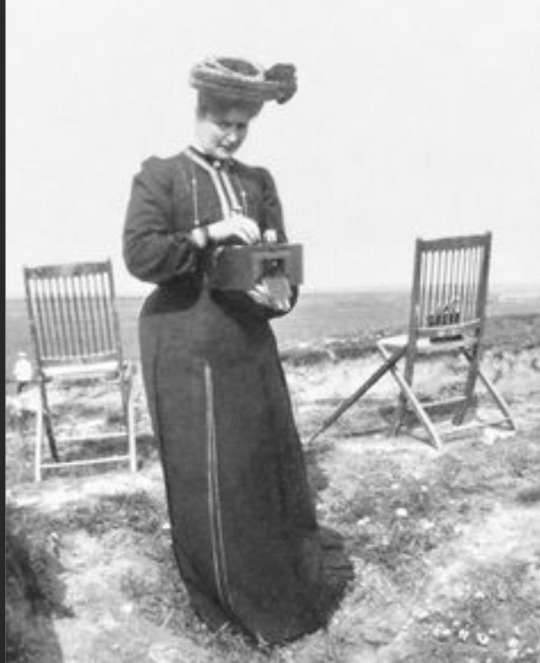
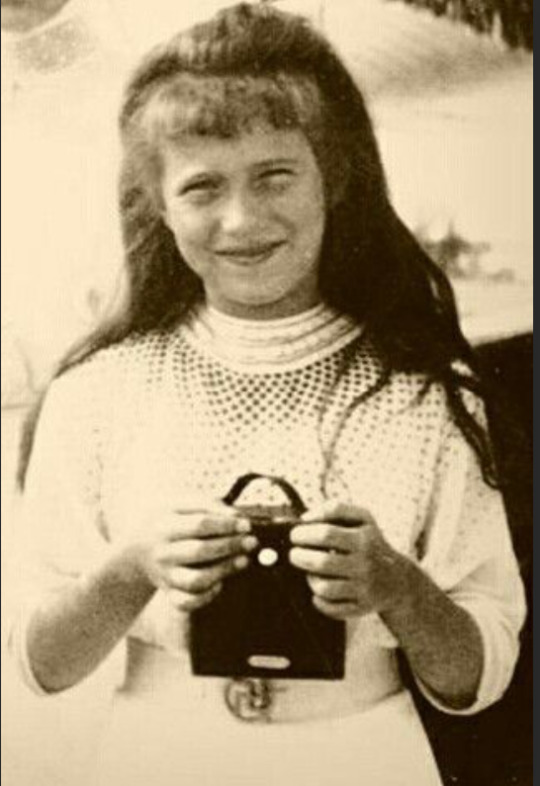


#romanov#romanov family#Kodak Brownie#Tsarevich Alexei#Grand Duchess Anastasia Nikolayevna#Grand Duchess Tatiana Nikolayevna#Grand Duchess Olga Nikolayevna#Empress Alexandra Feodorovna#Alix of Hesse#Nicholas II
27 notes
·
View notes
Text
Gutenberg and Luther: Disruptive Technology (Essay)

Martin Luther
Technological innovations that "evaporate" a single market are sometimes called "disruptive technologies." Kodak is an example of a company that faced a life-or-death crisis because it stuck to conventional film despite the widespread use of digital cameras. When photographs are stored and printed electronically, the traditional film camera market will 'evaporate'.
Now that the information medium that replaces "paper" has become commonplace as it is today, looking back, we can see that "paper = letterpress printing" was also a "destructive technology" in the Middle Ages.
In medieval Europe, instead of what we now call paper, they used "parchment", a "paper" derived from animals, so copying sutras by hand was inefficient. Cai Lun of China invented paper in 105 A.D. A paper craftsman who was taken prisoner by the Tang Dynasty in China during the Battle of Taras in 751 passed on to the Saracen Empire and passed on his paper-making skills to the Saracen Empire for many years. In 1189, it was introduced to France.
And here comes a person who uses medieval "disruptive technology". Johannes Gutenberg (1398?-1468). In 1455, he printed the Old Testament and the New Testament. At that time, people thought that hand-copying sutras would not have been possible in such a large quantity, and that it was the work of the devil. (At that time, the Bible was written by hand, letter by letter.) Gutenberg himself was betrayed by his business partner and felt bitter, but continued the printing and binding business.
Then, when it became possible for anyone to obtain the Bible relatively cheaply, the momentum for the Reformation increased, and Martin Luther (1483-1546) raised his voice. (By the time he was born, Gutenberg's Bible was already circulating.)
As we have seen, "paper = letterpress printing" is very similar and parallel to the modern IT revolution. Perhaps it is a "disruptive technology" that is more drastic than the IT revolution or equivalent. Today's Twitter and Facebook on the Internet have moved Arab youth and produced the "Jasmine Revolution." The situation is very similar in the case of the Reformation. Because there is no need for a professional priest like the Catholic Church, and each person is now able to face the Bible. It is a gift of letterpress printing that can print in large quantities = bookbinding.
7 notes
·
View notes
Text
360-degree panoramic camera Market Size and Share 2024 Industry Analysis by Future and Growth Forecast to 2032
360 Degree Panoramic Camera Market Size Was Valued at USD 144.33 Billion in 2023, and is Projected to Reach USD 1008.36 Billion by 2032, Growing at a CAGR of 24.11% From 2024-2032.
The market for 360-degree panoramic cameras has expanded dramatically in recent years due to the growing demand across a range of industries for immersive and interactive visual experiences. With their wide field of vision and ability to record a complete 360-degree panorama, these cameras are perfect for a variety of uses, including entertainment, security monitoring, virtual reality, and augmented reality.
Utilizing 360-degree cameras to produce immersive material, AR technologies and consumer devices as well as professional photography gear and industrial applications have all embraced this technology, which offers a flexible approach to take panoramic photos and films.
Get Sample Report
https://introspectivemarketresearch.com/request/9790
Key Prominent Players In The 360 Degree Panoramic Camera Market:
Samsung, Nikon, Nokia, Bublcam, Teche, Ricoh, Canon, Sony, Panono, 360fly, GoPro, Insta360, LG Electronics, Kodak and other major players.
Market Segmentation Of 360 Degree Panoramic Camera Market:
This research study comprises a comprehensive assessment of the market through far-reaching qualitative and quantitative insights and predictions. This report offers a classification of the market into imminent and niche sectors. Furthermore, this research study calculates the market size and its development drift at global, regional, and country levels from 2023 to 2030. This report contains the market breakdown and its revenue estimation by classifying it on the basis of product type, sales channel sales, application, and region. :
By Type
By Verticals
By Region
(US, Canada, Mexico)
(Bulgaria, The Czech Republic, Hungary, Poland, Romania, Rest of Eastern Europe)
(Germany, UK, France, Netherlands, Italy, Russia, Spain, Rest of Western Europe)
(China, India, Japan, South Korea, Malaysia, Thailand, Vietnam, The Philippines, Australia, New Zealand, Rest of APAC)
(Turkey, Bahrain, Kuwait, Saudi Arabia, Qatar, UAE, Israel, South Africa)
(Brazil, Argentina, Rest of SA)
Get Discount on premium Report: -
https://introspectivemarketresearch.com/discount/9790
The 360 Degree Panoramic Camera Market report provides a detailed analysis of global market size, regional and country market size, segmentation market growth, market share, competitive landscape, sales analysis, impact of national and global market players, optimization of the value chain, trade. regulations, recent developments, opportunity analysis, strategic market growth analysis, product launches, expanding area market
Key Points Covered In The 360 Degree Panoramic Camera Market Survey:
Table Of Content
Chapter 1: Introduction
1.1 Research Objectives
1.2 Research Methodology
1.3 Research Process
1.4 Scope and Coverage
1.4.1 Market Definition
1.4.2 Key Questions Answered
1.5 Market Segmentation
Chapter 2:Executive Summary
Chapter 3:Growth Opportunities By Segment
3.1 By product type
3.2 By verticals
Chapter 4: Market Landscape
4.1 Porter's Five Forces Analysis
4.1.1 Bargaining Power of Supplier
4.1.2 Threat of New Entrants
4.1.3 Threat of Substitutes
4.1.4 Competitive Rivalry
4.1.5 Bargaining Power Among Buyers
4.2 Industry Value Chain Analysis
4.3 Market Dynamics
3.5.1 Drivers
3.5.2 Restraints
3.5.3 Opportunities
3.5.4 Challenges
4.4 Pestle Analysis
4.5 Technological Roadmap
4.6 Regulatory Landscape
4.7 SWOT Analysis
4.8 Price Trend Analysis
4.9 Patent Analysis
4.10 Analysis of the Impact of Covid-19
4.10.1 Impact on the Overall Market
4.10.2 Impact on the Supply Chain
4.10.3 Impact on the Key Manufacturers
4.10.4 Impact on the Pricing
Chapter 4: 360 Degree Panoramic Camera Market by product type
4.1 360 Degree Panoramic Camera Market Overview Snapshot and Growth Engine
4.2 360 Degree Panoramic Camera Market Overview
4.3 Industria
4.3.1 Introduction and Market Overview
4.3.2 Historic and Forecasted Market Size (2016-2028F)
4.3.3 Key Market Trends, Growth Factors and Opportunities
4.3.4 Industria: Grographic Segmentation
4.4 Commercial
4.4.1 Introduction and Market Overview
4.4.2 Historic and Forecasted Market Size (2016-2028F)
4.4.3 Key Market Trends, Growth Factors and Opportunities
4.4.4 Commercial: Grographic Segmentation
Chapter 5: 360 Degree Panoramic Camera Market by verticals
5.1 360 Degree Panoramic Camera Market Overview Snapshot and Growth Engine
5.2 360 Degree Panoramic Camera Market Overview
5.3 Media & entertainment
5.3.1 Introduction and Market Overview
5.3.2 Historic and Forecasted Market Size (2016-2028F)
To Be Continued……
Purchase This Premium Report Now:
https://introspectivemarketresearch.com/checkout/?user=1&_sid=9790
About Us:
Introspective Market Research (introspectivemarketresearch.com) is a visionary research consulting firm dedicated to assist our clients grow and have a successful impact on the market. Our team at IMR is ready to assist our clients flourish their business by offering strategies to gain success and monopoly in their respective fields. We are a global market research company, specialized in using big data and advanced analytics to show the bigger picture of the market trends. We help our clients to think differently and build better tomorrow for all of us. We are a technology-driven research company, we analyse extremely large sets of data to discover deeper insights and provide conclusive consulting. We not only provide intelligence solutions, but we help our clients in how they can achieve their goals.
Contact us:
Introspective Market Research
3001 S King Drive,
Chicago, Illinois
60616 USA
Ph no: +1 773 382 1049
Email:[email protected]
0 notes
Photo

#film photography#film photographers#film photo#film community#medium format film#medium format#analog photography#analog#analogue#i shoot film#120 film#film is not dead#stay broke shoot film#believe in film#film feed#pentax 67#kodak professional#kodak europe#kodak portra#portra 400#visit sweden#gotland
11 notes
·
View notes
Text
Portraiture Through The Ages
In the 1940′s, camera technology wasn't as advanced as it is to this date, however within this time period, camera technology was considered the most advanced of its time period.
Beginning with the lowest of the low, we have the Kodak Brownie Flash Six-20...

The brownie box, being sold at $6.00 which was introduced in July 1946, is made from a metal box body, with a strange shape. It features an optical direct vision finder, a built-in closeup lens, and time exposure capability. It also accepts a cumbersome flashgun.
The Brownie Flash Six-20 camera was quite a popular camera in its time because of it's indestructibility, taking the place of the modern-day compact or cell phone camera in terms of market penetration.
This camera now sells for around $20-$30.
Up from this, we have the cheap folding cameras like the Agfa Isolette/Ansco Speedex.
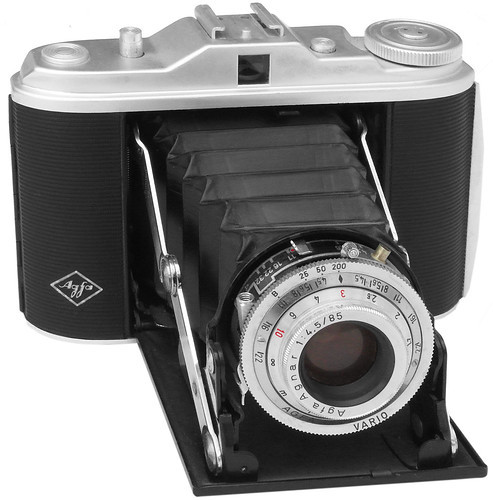

There are two models of the Agfa Isolette, The early model, produced before and during WW2 and the later, produced after WW2. This camera, made by Agfa Kamerawerk AG, Munich, Germany, was named the ‘solders camera’ or ‘Soldatenkamera’. There were many different lens/shutter combinations to this camera, making it impressive in its time period.
The late model was made from 1946 till 1950 with the name writing as Jsolette or Isolette. The camera offered many different lens/shutter combinations, like f/4.5 Agnar, Apotar or Solinar lenses and Prontor, Prontor-S or Compur-Rapidshutters.
This camera costed around $15 back then, but are now sold for around $100-$500.
The Ansco Speedex camera was introduced in early 1940. The camera is labeled on the front as a Agfa B2 Speedex with a 85mm f/4.5 lens. It was actually made in Binghamton, NY when Ansco and Agfa merged. There are no interlock which prevents double exposures.
It is unknown its original price, but it is however sold for around $30-$70 modern day.
We next have the next technological progression, the high-end folding cameras. Equipped with the occasional rangefinder, these devices were even more expensive but were equipped with advanced lenses and shutters. The Kodak monitor 620, is a prime example of these types of cameras.

This camera was introduced between 1939 and 1948, originally sold for $48.50, now selling for around the same price. The camera has advanced features such as an automatic frame counter, double exposure prevention, an uncoupled depth of field scale, and dual viewfinders. This camera was extremely well produced and still is capable of capturing amazing images.
The Leica and their various camera models had produced photojournalism cameras for the international market since the early 1930′s and showed to be productive and effective on the market.

The Leicia IIIc was introduced 1940–1951. This was and still is a very valuable camera model, selling now for around $700-$1000, It was said to have took up 5% of the professional photography market.
Perhaps the most recognisable and famous most used camera of that time was the press cameras, the huge boxy cameras with the wireframe finders and flashbulbs.

These camera targeted 90% of the newspaper photography market 9 out of ten photographers who worked for news agencies chose Graflex models, one of the most popular brands of that time along side Busch (as shown in this image).
These were sold roughly for $3000 alongside with accessories and other gear. These cameras were the best of the best with the manufacturers pulling out all the stops to produce solid press cameras.

This is an iconic image taken on a Graflex by Joe Rosenthal.
Photographers in the 1940′s

Carl Mydans prepared himself from an early age for his lifelong involvement with journalism. Between 1940 and 1944, Mydans and his wife Shelley Mydans were in Asia, first covering Chungking in its stand against the Japanese bombings, then in Burma, Malaya and the Philippines. While in the Philippines they were both captured by the Japanese and imprisoned for 21 months. This, however, did not deter Mydans, as he went on to photograph many more wartime situations after his release. Mydans recorded photographic images of life and death throughout Europe and Asia during WW2 travelling over 45,000 miles.
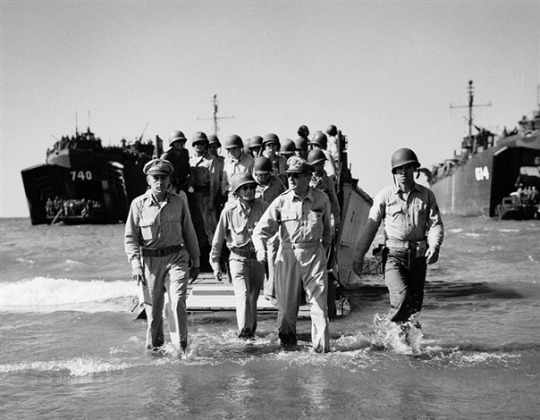
General Douglas MacArthur Landing at Luzon, Philippines, 1945. ‘Blue Beach’, Dagupan, Island of Luzon, Lingayen Gulf, Philippines.

Casualties of a mass-panic during a Japanese air raid in Chongqing in 1941.
Joe Rosenthal spanned more than 50 years, he is best known for a single image: Raising the Flag on Iwo Jima.

The photograph of six men on a tiny island in the Pacific was immediately a symbol of victory and heroism, and became one of the most famous, most reproduced and even most controversial photographs of all time.

Flag Raising on Iwo Jima, 1945.

U.S. Marines of the 28th Regiment, fifth division, cheer and hold up their rifles after raising the American flag atop Mount Suribachi on Iwo Jima, a volcanic Japanese island, on Feb. 23, 1945 during WW2.
Toni Frissell trained as an actress and worked in advertising before devoting herself to photography.

Frissell had a major contribution to fashion photography in the 1940′s.

Woman wearing tennis outfit, seated on wall. Toni Frissell. 1947 Febuary.

Eleanor Roosevelt talking with woman machinist during her goodwill tour of Great Britain. Toni Frissell. 1942 November.
Henri Cartier-Bresson is a French photographer, a well-known figure in the history of photography during WW2. His work of spontaneous photographs helped establish photojournalism as an art form.
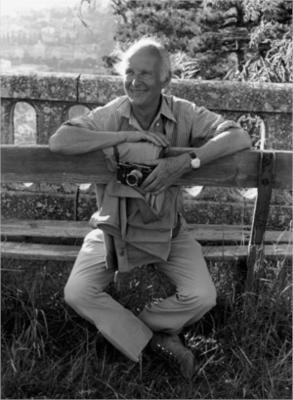
He was imprisoned by the Germans in 1940 during the Battle of France and spent 35 months subjected to forced labour in prisoner-of-war camps until, after several failed attempts, he escaped in 1943.

Germany, WW2, Henri Cartier-Bresson 1945.
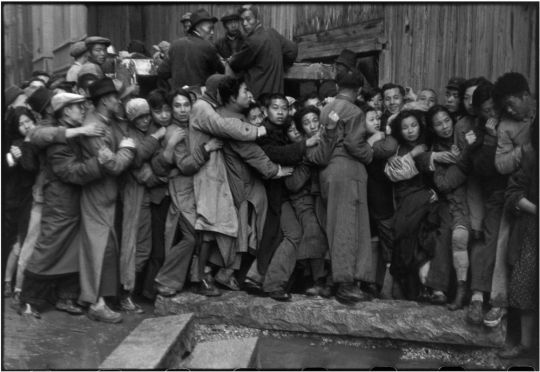
Crowd waiting outside a bank to purchase gold during the last days of the Kuomintang, Shanghai, China, December 1948.
A fair amount of photographers during the 1940 period relied on documentary styled images, documenting the drastic happenings of that period of time, until In the period after WW2, as the United States entered a period of domestic peace and prosperity, many photographers there moved away from documentary style photography and focused instead mostly on the intrinsic qualities of photography.
3 notes
·
View notes
Text
Timeline 1890s
What major events happened in the 1890s?

Politics and wars
First Franco-Dahomean War (1890)
Second Franco-Dahomean War (1892–1894)
First Sino-Japanese War (1894–1895)
First Italo-Ethiopian War (1895–1896)
Greco-Turkish War (1897)
Spanish–American War (1898)
Philippine–American War (1899–1902)
Second Boer War (1899–1902)
Science and technology in 1890s
Henri Becquerel discovered radioactivity.
X-rays were discovered by Wilhelm Röntgen.
Swedish scientist Svante Arrhenius and US geologist Thomas Chrowder Chamberlin independently suggested that human CO2 emissions might cause global warming.
1894: Argon was discovered by Lord Rayleigh and William Ramsay.
1895: Helium was discovered to exist on the Earth by William Ramsay, 27 years after first being detected spectrographically on the Sun in 1868.
1896: One year after helium's terrestrial discovery, neon, krypton, and xenon were discovered by William Ramsay and Morris Travers.
1897: Social scientist Émile Durkheim published the groundbreaking study Suicide.
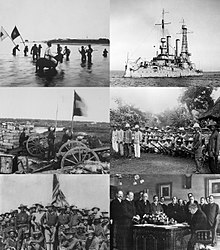
The Back Story: A Photo Trend From The 1890s
In the early years of photography, shooters in America began taking pictures of people from the back. Thumb through old turn-of-the-20th century snapshots — in this country and in Europe — and you are liable to see women, men, couples facing "the wrong direction."

Woman holding a bonnet, with her back to camera, between 1880 and 1900.

A loving couple, Library of Congress
1890s. Mass Market, Domestic Photography
Until the 1890s, photography was primarily a professional occupation. The advent of consumer photography in that final decade of the 19th century, can therefore be considered a major step in photographic history. Again, this development was driven by technological advancements: in the 1880s, the American George Eastman had launched a flexible roll film as well as the first Kodak camera. This portable device – no longer requiring a tripod – offered 100 exposures, only to be processed after having returned the entire camera to the Eastman company. The result: circle-shaped pictures of recommendable quality. While professional photographers and artists explored this new tool from a creative standpoint, domestic and snapshot photography took a flying start: anyone capable of pressinga button and winding a crank could now be a photographer, capturing whatever he or she might find interesting – for an affordable price.
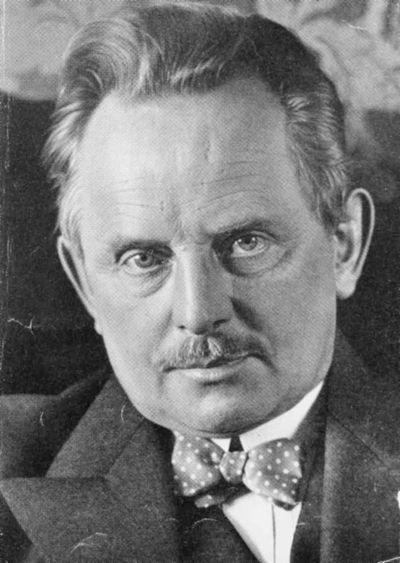
Oskar Barnack
The democratization of photography was a true revolution and anirreversible process, precipitating the omnipresence of the image in the 21st century. Oskar Barnack of the E. Leitz company made his contribution to this evolution by inventing – at the eve of World War I – a miniature camera using perforated strips of 35-mm film, later to be commercialized as the Leica (1924). While some distrusted this easy-to-use and compact device and deemed it unsuitable for serious photography, others embraced the new opportunity to photograph anytime, anywhere. Very soon the Leica became the predominant camera among both professionals and amateur photophiles.
1890's Photography
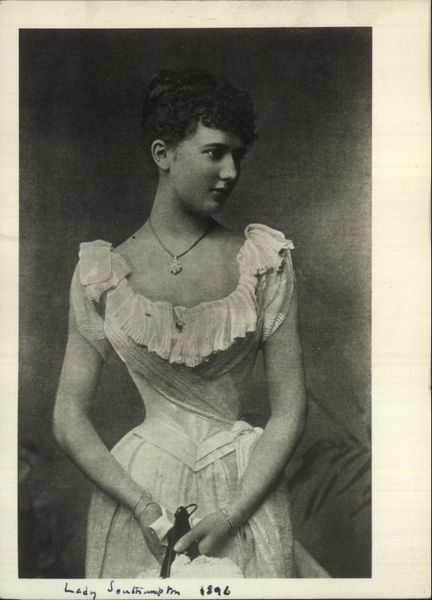
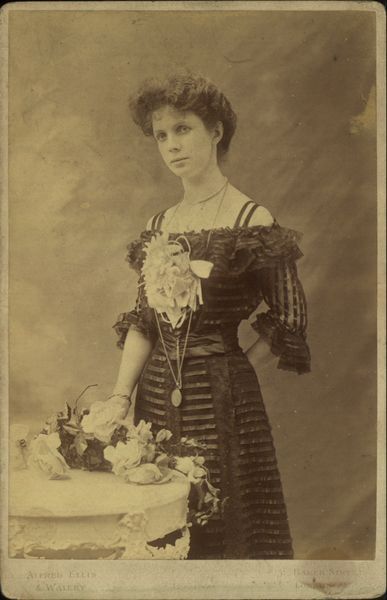
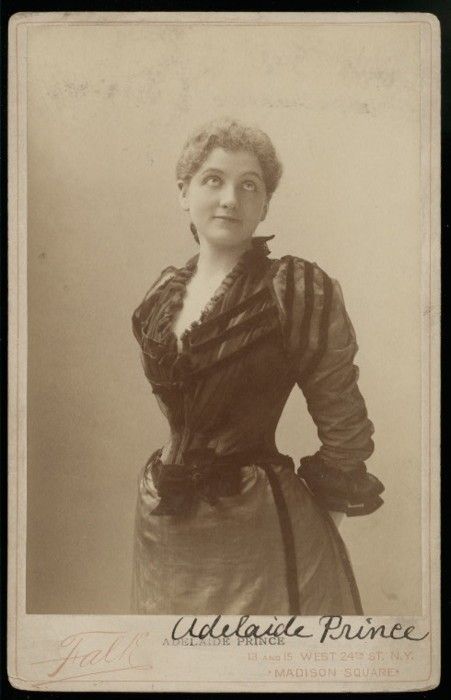
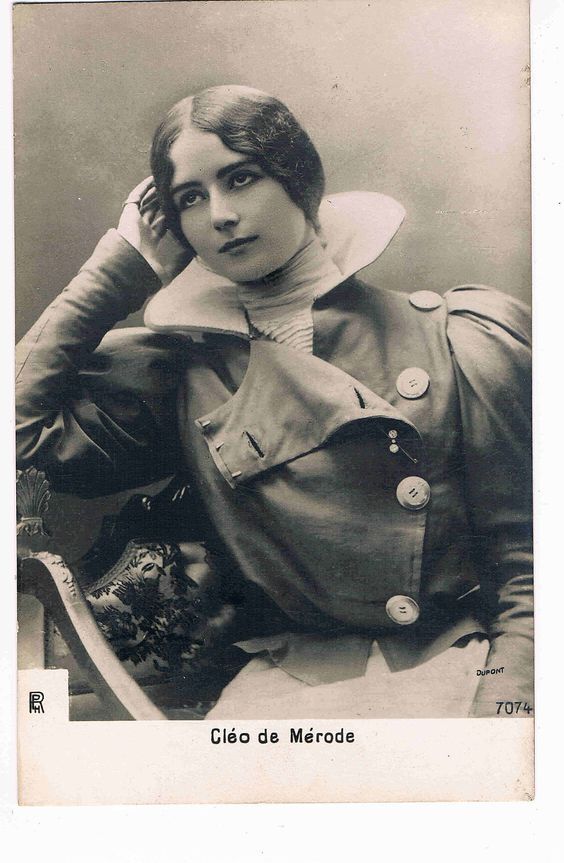
Photos from Collection | Manchester Art Gallery
1 note
·
View note
Text
Printing Machine Market has Huge Demand Top Key Players Profiling - Konica Minolta, Bobst, Ryobi, Duplo, Xerox

The recent report on “Global Printing Machine Market Report 2022 by Key Players, Types, Applications, Countries, Market Size, Forecast to 2030” offered by Credible Markets, comprises of a comprehensive investigation into the geographical landscape, industry size along with the revenue estimation of the business. Additionally, the report also highlights the challenges impeding market growth and expansion strategies employed by leading companies in the “Printing Machine Market”.
An exhaustive competition analysis that covers insightful data on industry leaders is intended to help potential market entrants and existing players in competition with the right direction to arrive at their decisions. Market structure analysis discusses in detail Printing Machine companies with their profiles, revenue shares in market, comprehensive portfolio of their offerings, networking and distribution strategies, regional market footprints, and much more.
Key players in the global Printing Machine market: Konica Minolta Bobst Ryobi Duplo Xerox Kodak Agfa HP Heidelberg Komori Comexi Esko KBA Durst Fujifilm Cerutti SpA Canon Domino Ricoh Goss International/ Shanghai Electric EFI On the basis of types, the Printing Machine market from 2018 to 2030 is primarily split into: Web offset lithography Flexography Gravure Others On the basis of applications, the Printing Machine market from 2018 to 2030 covers: Clothing/Garment Paper Display and others Technical textiles Others
Click the link to get a free Sample Copy of the Report @ https://crediblemarkets.com/sample-request/printing-machine-market-836153?utm_source=Kaustubh&utm_medium=SatPR
Regional Analysis of Global Printing Machine Market
All the regional segmentation has been studied based on recent and future trends, and the market is forecasted throughout the prediction period. The countries covered in the regional analysis of the Global Printing Machine market report are U.S., Canada, and Mexico in North America, Germany, France, U.K., Russia, Italy, Spain, Turkey, Netherlands, Switzerland, Belgium, and Rest of Europe in Europe, Singapore, Malaysia, Australia, Thailand, Indonesia, Philippines, China, Japan, India, South Korea, Rest of Asia-Pacific (APAC) in the Asia-Pacific (APAC), Saudi Arabia, U.A.E, South Africa, Egypt, Israel, Rest of Middle East and Africa (MEA) as a part of Middle East and Africa (MEA), and Argentina, Brazil, and Rest of South America as part of South America.
What does the Report Include?
The market report includes a detailed assessment of various drivers and restraints, opportunities, and challenges that the market will face during the projected horizon. Additionally, the report provides comprehensive insights into the regional developments of the market, affecting its growth during the forecast period. It includes information sourced from the advice of expert professionals from the industry by our research analysts using several research methodologies. The competitive landscape offers further detailed insights into strategies such as product launches, partnership, merger and acquisition, and collaborations adopted by the companies to maintain market stronghold between 2022 and 2030.
Direct Purchase this Market Research Report Now @ https://crediblemarkets.com/reports/purchase/printing-machine-market-836153?license_type=single_user;utm_source=Kaustubh&utm_medium=SatPR
The report can answer the following questions:
North America, Europe, Asia Pacific, Middle East & Africa, Latin America market size (sales, revenue and growth rate) of Global Printing Machine industry.
Global major manufacturers’ operating situation (sales, revenue, growth rate and gross margin) of Global Printing Machine industry.
Global major countries (United States, Canada, Germany, France, UK, Italy, Russia, Spain, China, Japan, Korea, India, Australia, New Zealand, Southeast Asia, Middle East, Africa, Mexico, Brazil, C. America, Chile, Peru, Colombia) market size (sales, revenue and growth rate) of Global Printing Machine industry.
Different types and applications of Global Printing Machine industry, market share of each type and application by revenue.
Global market size (sales, revenue) forecast by regions and countries from 2022 to 2030 of Global Printing Machine industry.
Upstream raw materials and manufacturing equipment, industry chain analysis of Global Printing Machine industry.
SWOT analysis of Global Printing Machine industry.
New Project Investment Feasibility Analysis of Global Printing Machine industry.
Contact Us
Credible Markets Analytics
99 Wall Street 2124 New York, NY 10005
Email: [email protected]
0 notes
Text

Barbens / Mayo de 2024.
#fotografia #photography #visualart #fotodeautor #35mm #fotoanalogica #analogphotography #photoargentique #vmfoto #intimité #intimität #intimacy #mifotodiario #myphotodiary #petiteshistòries #pequeñaahistorias #littlehistories
#photographers on tumblr#photography#photographer#35mm#35mm color photography#35mm photography#kodak 35mm#35mm color film#kodak portra 400#foto analogica#foto analógica#analog society#fotografia analogica#analog photography#analog#photo argentique#argentique#kodak professional europe#kodak film#kodak#intimidad#intimate#intimacy#intimidade#intimità#intimité#my photo album#myphotodiary#journal intime#visual art
9 notes
·
View notes
Text




The distinguished architect John Burnett died on July 2nd 1938 at Colinton, Edinburgh.
Burnett designed buildings the length and breadth of the British Isles and on the continent of Europe and as far afield as South Africa.
John Burnet was born a soldier's son at Craighead House, Kirk O' Shotts, and trained initially as a carpenter. After becoming a Clerk of Works, he set up as an architect specializing in modest churches and houses in the Italianate and Classical styles, and large-scale commercial buildings and hospitals in the Italian Renaissance, Baronial and Gothic styles.
One of his first undertakings in Glasgow was the Royal Institute of the Fine Arts in Sauchiehall Street, which was won by competition. Other notable buildings there are the offices of the Clyde Trust, the Athenaeum, the Botanical Department and extension of the University, the Pathological Institute, the Barony Church.
In Edinburgh he designed the Professional and Civil Service Stores, George Street, the business premises of R. W. Forsyth in Princes Street, which later housed Burtons for many years, and in Scotland and England generally many public, ecclesiastical and domestic buildings. He was also architect for the Edinburgh International Exhibition of 1906.
Important commissions came to him from London and to London he devoted the latter part of his life, the firm, of which he was senior partner, being known as Sir John Burnet, Tait & Lorne. He had the honour in 1905 of being entrusted by the Government with the important additions to the British Museum, now known as the King Edward VII. Galleries.
Among his numerous London designs are the Institute of Chemistry in Russell Square, the Kodak building in Kingsway, Adelaide House and Vigo House, and the Second Church of Christ Scientist. He was the chief architect in Palestine and Gallipoli for the Imperial War Graves Commission.
The professional esteem with which Sir John was regarded in Britain may be expressed by the words used in connection with the conferring of the Gold Medal of the Royal Institute of British Architects in 1923, ‘‘ Few architects living can compare with him either in quantity or quality of output, and fewer still may be said to have had as pervasive an influence on the work of their own time.”
In France he had received both bronze and gold medals at the Salon and was a corresponding member of the Institute of France and of the Société central des Architectes Francais. He had the same relation with the American Institute of Architects.
Knighted in 1914, Sir John was a member of both the Royal Scottish Academy and the Royal Academy. He was an Honorary LL.D., of Glasgow and Fellow of the Royal Institute of British Architects, of the Royal Society, Edinburgh, and of the Royal Society of Antiquaries.
Though he took fewer commissions personally, Burnet worked into his late seventies – he designed the famous Unilever building on London in 1933 - before he eventually retired, spending his final years at Colinton in Edinburgh. He died at home at the age of 81 on this day, 1938, he is buried at Warriston Cemetery.
Pics are Forsyths on Princes Street Edinburgh, Athenaeum Theatre, Buchanan Street, Glasgow and Charing Cross Mansions, Glasgow.
8 notes
·
View notes
Text
Pico Projector Market Business Strategies, Revenue and Growth Rate Upto 2027

Pico Projector Market size was valued at US$ 3.47 Bn. in 2021. Pico Projector will encourage a great deal of transformation in Consumer Electronics and Medical Industry.
Pico Projector Market Overview:
The goal of this MMR report is to estimate the market size for Pico Projector. The global industry is covered in both qualitative and quantitative detail in this MMR Pico Projector Market Report. Learn about the most important Pico Projector market drivers, constraints, opportunities, success pressures, problems, and issues. Regions such as Asia Pacific, North America, Europe, and others will be split and anticipated further (ROW). In each region's major countries, these regions are further split and anticipated. Using secondary sources like as encyclopaedias, directories, and databases, Maximize Market Research found and compiled information for this large commercial investigation of the Pico Projector market. We contacted important industry and supplier experts as a primary source to get and evaluate critical information and assess the future prospects for the sector.
Get Free Sample:
https://www.maximizemarketresearch.com/request-sample/6832
Pico Projector Market Segmentation:
In terms of technology, the DLP sector dominated the market in 2021, with a 43 percent share. The growth of digital light processing is being fueled by two major factors: sealed imaging chips and filter-free chips. The majority of digital light processing projectors use DLP chips, which removes the chance of dust particles penetrating the projected image. Furthermore, the DLP chips do not require air filters, which simplifies maintenance by eliminating the need to clean the filter. Novel DLP chip applications, such as LED pico projectors that fit in the palm of a human hand and are the size of a mobile phone, are expected to boost the growth of the digital light processing market.
Pico Projector Market Competitors:
• Lenovo Group Ltd. • Optoma Technology Corp. • Syndiant • ZTE Corporation • Celluon, Inc. • Miroir USA • Epson • Canon • Dell • HP • Acer • Sony • Kodak • Philips • Panasonic • Vivitek • Optoma
Get More Report Details:
https://www.maximizemarketresearch.com/market-report/global-pico-projector-market/6832/
Pico Projector Market Regional Analysis:
Maximize market research Pico Projector North America, Asia Pacific, Europe, Latin America, the Middle East, and Africa are all covered in market reports. MMR investigates significant market segments and sub segments, as well as main market sectors, as part of this research. Use market research to its full potential Pico Projector Market reports rank creative nations in terms of market size, share, and volume. Quantity, area, sales, market chain systems, and trends are all included.
MMR used both direct and secondary research to provide a 360-degree analysis of the Pico Projector Market. This helped in understanding current market dynamics such as supply-demand imbalances, pricing trends, product preferences, and customer behaviour, among other things. Primary research with industry professionals and opinion leaders from around the world backed up the findings. Various market estimation and data validation methodologies are used in compiling and validating the data. MMR also has its own data forecasting system, which predicts market growth till 2027.
COVID-19 Impact Analysis on Pico Projector Market:
During 2020 and 2021, the COVID-19 Rule had a significant impact on global, industry, and labour expectations. COVID-19 is a threat to society and way of living that requires prompt industry help and innovation. For Indian expats, COVID-19 creates a plethora of problems. Millions of migrant workers have lost their jobs as a result of the embargoes, are facing food shortages, and are anxious about their future.
The MMR study's overall goal is to improve our understanding of the current economy, COVID-19, and its consequences for the commercial sector. In most industries, sectors, and fields, the COVID-19 is followed by MMR. You may assess how COVID-19 will impact industry losses and growth with the Maximize Market Research Report (MMR).
Key Questions Answered in the Pico Projector Market Report are:
Which product segment grabbed the largest share in the Pico Projector market?
How is the competitive scenario of the Pico Projector market?
Which are the key factors aiding the Pico Projector market growth?
Which region holds the maximum share in the Pico Projector market?
What will be the CAGR of the Pico Projector market during the forecast period?
Which application segment emerged as the leading segment in the Pico Projector market?
Which are the prominent players in the Pico Projector market?
What key trends are likely to emerge in the Pico Projector market in the forecast period?
What is the expected Pico Projector market size by 2027?
Which company held the largest share in the Pico Projector market?
If You Have Any Questions About This Report? Please Contact Us On the link mentioned below:
Email: [email protected]
About Us:
MAXIMIZE MARKET RESEARCH PVT. LTD.
3rd Floor, Navale IT Park Phase 2,
Pune Bangalore Highway,
Narhe, Pune, Maharashtra 411041, India.
Phone No.: +91 20 6630 3320
Website: www.maximizemarketresearch.com
0 notes
Text
Intelligent Document Processing Market Share, Growth Prospects and Key Opportunities by 2026
According to a research report "Intelligent Document Processing Market Share by Component (Solutions, Services), Deployment Mode (Cloud, On-Premises), Organization Size, Technology, Vertical (BFSI, Government, Healthcare and Life Sciences), and Region - Global Forecast to 2026" published by MarketsandMarkets, the global Intelligent Document Processing market size is expected to grow from USD 0.8 billion in 2021 to USD 3.7 billion in 2026, at a Compound Annual Growth Rate (CAGR) of 36.8% during the forecast period. The major factors driving the growth of the Intelligent Document Processing market include the rising need for enterprises to process large volumes of semi-structured and unstructured documents with greater accuracy and speed, increasing investments in digital transformation, and the rising adoption of cloud-based document processing solutions.
Based on component, the services segment is expected to grow at a higher CAGR during the forecast period
With rising technological advancements, the demand for intelligent document processing solutions is expected to rise. This is projected to fuel the demand for intelligent document processing services. Services offered by most intelligent document processing solution vendors include professional services and managed services. Intelligent document processing services play a crucial role for every solution vendor as clients expect seamless integration of the solution as well as training and support of the provided solution with the enterprise’s system.
Based on organization size, the large enterprises segment is expected to hold the highest market size during the forecast period
Based on organization size, the intelligent document processing market is segmented into SMEs and large enterprises. Large enterprises are the leading adopters of intelligent document processing solutions and services due to the increasing need to analyze the structured and unstructured data collected over the years. These enterprises focus on delivering enhanced customer experiences and gaining a leading edge in the market.
North America to hold the highest market size during the forecast period
The Intelligent document processing market has been segmented into five regions: North America, Europe, the Asia Pacific, the Middle East & Africa, and Latin America. By market size, North America is expected to be the major contributor to the intelligent document processing market during the forecast period. The US and Canada comprise the North American market. Enterprises in the region are most progressive in terms of AI, ML, NLP, and computer vision adoption, thereby boosting the growth of the document analysis market. The presence of key players in North America (such as ABBYY, Kofax, IBM, WorkFusion, Automation Anywhere, Parascript, Hyland, and Extract Systems) is also a key factor responsible for the adoption of intelligent documents processing in the region.
Major vendors operating in the intelligent document processing vendors include ABBYY (US), IBM (US), Kofax (US), WorkFusion (US), Automation Anywhere (US), Appian (US), UiPath (US), Datamatics (India), Deloitte (England), AntWorks (Singapore), Parascript (US), Hyperscience (US), OpenText (Canada), Hyland (US), Extract Systems (US), Infrrd (US), Celaton (UK), HCL Technologies (India), Kodak Alaris (UK), Rossum (UK), InData Labs (Belarus), Ephesoft (US), IRIS (Europe), Evolution AI (England), BIS (US), and AmyGB (India).
About MarketsandMarkets™
MarketsandMarkets™ provides quantified B2B research on 30,000 high growth niche opportunities/threats which will impact 70% to 80% of worldwide companies’ revenues. Currently servicing 7500 customers worldwide including 80% of global Fortune 1000 companies as clients. Almost 75,000 top officers across eight industries worldwide approach MarketsandMarkets™ for their painpoints around revenues decisions.
Our 850 fulltime analyst and SMEs at MarketsandMarkets™ are tracking global high growth markets following the "Growth Engagement Model – GEM". The GEM aims at proactive collaboration with the clients to identify new opportunities, identify most important customers, write "Attack, avoid and defend" strategies, identify sources of incremental revenues for both the company and its competitors. MarketsandMarkets™ now coming up with 1,500 MicroQuadrants (Positioning top players across leaders, emerging companies, innovators, strategic players) annually in high growth emerging segments. MarketsandMarkets™ is determined to benefit more than 10,000 companies this year for their revenue planning and help them take their innovations/disruptions early to the market by providing them research ahead of the curve.
MarketsandMarkets’s flagship competitive intelligence and market research platform, "Knowledgestore" connects over 200,000 markets and entire value chains for deeper understanding of the unmet insights along with market sizing and forecasts of niche markets.
Contact: Mr. Aashish Mehra MarketsandMarkets™ INC. 630 Dundee Road Suite 430 Northbrook, IL 60062 USA : 1-888-600-6441 [email protected]
0 notes
Text
Global Funcal Printing tionMarket Key Reasons For The Present Growth Trends With Detailed Forecast To 2021-2027
Global Funcal Printing tionMarket is expected to reach US$ 45.33 Bn by 2027, at a CAGR of 18.53% during the forecast period.
Global Functional Printing Market Overview:
Global Functional Printing Market: Report Scope the latest industry report on the Global Functional Printing Market assesses the opportunities and current market landscape, offering insights and updates on the corresponding segments for the forecasted period of 2021-2027. The report contains a complete analysis of major market dynamics as well as detailed information on the Global Functional Printing Market's structure. This market research report provides unique insights into how the Global Functional Printing market is expected to grow from 2021 to 2027.
The primary goal of the Global Functional Printing Market research is to provide detailed information on market opportunities that are assisting in the transformation of Global Functional Printing enterprise. Report provide projected growth rates along with the compound annual growth rate (CAGR) for forecasted period to enable readers to better understand the monitoring and assessment of the Global Functional Printing Market, as well as to discover lucrative opportunities in the market.
Request for free sample: https://www.maximizemarketresearch.com/request-sample/64362
Market Scope:
Maximize Market Research, report provide overall market insights for manufacturers, suppliers, distributors, and investors in the Global Functional Printing Market. The information and data offered in the report may be used by all stakeholders in the Global Functional Printing market, as well as industry professionals, researchers, journalists, and business researchers.
Maximize Market Research, report provides a unique research approach to conduct detailed research on the global Global Functional Printing Market and make conclusions on the market's future growth factors. Primary and secondary research methodologies are combined in the research approach to assure the authenticity and validity of the conclusions in this report.
The report discusses the Global Functional Printing Market's drivers, restraints, opportunities, and challenges. The research helps to identify the market growth drivers and determining how to utilize these factors as strengths. Restraints can assist readers in identifying traits that are restricting the Global Functional Printing market, as well as reducing them before they become an issue. This will assist readers in comprehending the aspects that will influence your ability to capitalise on possibilities.
Get more Report Details : https://www.maximizemarketresearch.com/market-report/global-functional-printing-market/64362/
Key Players:
• HP Development Company, L.P. • Haiku Tech • Avery Dennison Corporation • BASF SE • Blue Spark Technologies • Display Corporation • E Ink Holdings Inc. • Eastman Kodak Company Ltd • EnfucellOy • GSI Technologies LLC • Isorg • Mark Andy Inc. • Nanosolar Inc. • Novaled AG • Optomec Inc. • Toppan Forms Co. Ltd • Toyo Ink Sc Holding Co. Ltd • Vorbeck Materials Corporation • Xennia Technology Limited • Xaar PLC • DuPont • KovioIn • Altana AG • AGFA-Gevaert Corporation • DuraTech Industries Inc. • Kovio Inc.
The competitive landscape shows the market share of major key competitors, as well as their key development plans and current financial performance over the previous five years. This information is anticipated to help businesses understand their competitors on a global level. Furthermore, the reports feature company profiles, product offers, critical financial data, country-level research, and a synthesis of demand and supply variables that influence market growth.
Regional Analysis:
Geographically, Global Functional Printing market report is segmented into several key regions are as follows,
Asia-Pacific (Vietnam, China, Malaysia, Japan, Philippines, Korea, Thailand, India, Indonesia, and Australia)
Europe (Turkey, Germany, Russia UK, Italy, France, etc.)
North America (the United States, Mexico, and Canada.)
South America (Brazil etc.)
The Middle East and Africa (GCC Countries and Egypt.)
Furthermore, the study covers market size, growth rate, import and export, as well as country-level analysis, integrating the demand and supply forces of the Global Functional Printing market in these countries, which are impacting market growth.
COVID-19 Impact Analysis on Global Functional Printing Market:
COVID-19's global influence on the Global Functional Printing market was examined in this research. During this crisis, the report examines the Global Functional Printing market's alternatives, demanding conditions, and difficult possibilities in detail. In terms of funding and market expansion, the paper briefly examines the COVID-19's merits and limitations. The study also contains a set of concepts that should aid readers in developing and planning company strategies.
The report considers consultations to overcome past disruptions and foresees potential ones in order to improve preparation. Businesses can use the frameworks to design their strategic alignments in order to recover from such disruptive trends. Maximize Market Research analysts can also assist readers in breaking down a complex circumstance and bringing resiliency to a situation that is uncertain.
About Us:
Maximize Market Research provides B2B and B2C research on 12000 high growth emerging opportunities & technologies as well as threats to the companies across the Healthcare, Pharmaceuticals, Electronics & Communications, Internet of Things, Food and Beverages, Aerospace and Defence and other manufacturing sectors.
Contact Us:
MAXIMIZE MARKET RESEARCH PVT. LTD.
3rd Floor, Navale IT Park Phase 2,
Pune Bangalore Highway,
Narhe, Pune, Maharashtra 411041, India.
Email: [email protected]
Phone No.: +91 20 6630 3320
Website: www.maximizemarketresearch.com
0 notes
Photo

#film photography#film photo#film photographers#film community#medium format film#medium format#analog photography#analog#analogue#i shoot film#120 film#film is not dead#stay broke shoot film#believe in film#film feed#pentax 67#kodak professional#kodak europe#kodak portra#portra 400#visit sweden#gotland
17 notes
·
View notes
Text
Security Ink Market Latest Trends, Forecast, and Opportunity Analysis 2020-2026
Introduction of Security Ink Market :
Security ink is one of the security materials that are primarily used to protect printed materials from fraud. Growth in the global security prinking industry is fuelled by rising industrialization and rising government security concern.
Maximize Market Research report is a user-based library of a Security Ink Market report database, delivers comprehensive reports with a detailed analysis of changing market trends, key segments, top investment organisations, value chain, regional landscape, and competitive scenario.
Each and every insights presented in the reports published by expert group of Maximize Market Research, which is derived from primary interviews with top officials from leading companies of the domain concerned. Report’s secondary data research methodology includes deep online and offline research and discussion with expert professionals and analysts in the industry. In report, Security Ink Market reports, industry trends have been explained on the macro level, which is expected to help to finding outline market landscape and probable future issues.
Request for free sample:
https://www.maximizemarketresearch.com/request-sample/90836
COVID-19 Impact on Security Ink Market :
The report has identified detailed impact of COVID-19 on Security Ink Market in regions such as North America, Asia Pacific, Middle-East, Europe, and South America. The report provides Comprehensive analysis on alternatives, difficult conditions, and difficult scenarios of Security Ink Market during this crisis. The report briefly elaborates the advantages as well as the difficulties in terms of finance and market growth attained during the COVID-19. In addition, report offers a set of concepts, which is expected to aid readers in deciding and planning a strategy for their business.
Ask your queries regarding the report:
https://www.maximizemarketresearch.com/market-report/global-security-ink-market/90836/
Security Ink Market Segmentation:
Security Ink Market size is studied using various approaches and analyses in this research report to provide reliable and in-depth information about the industry. It is segmented into numerous segments to cover various aspects of the market for a better understanding.
Security Ink Market Regional Insights:
Asia-Pacific (Vietnam, China, Malaysia, Japan, Philippines, Korea, Thailand, India, Indonesia, and Australia)
Europe (Turkey, Germany, Russia UK, Italy, France, etc.)
North America (the United States, Mexico, and Canada.)
South America (Brazil etc.)
The Middle East and Africa (GCC Countries and Egypt.)
Key players:
The research report includes the current Security Ink Market size of the market and its growth rates based on 5-year statistics and records with company summary of Key players:
• Microtrace • SICPA • Sun Chemical • CTI • Gleitsmann Security Inks • Letong Ink • Cronite • Kao Collins • Chromatic Technologies • Eastman Kodak • Ink Tec • Gans • Villager Security Solutions • Pingwei • Shojudo • Luminescence • HOLDING • Wancheng • Hologramas de Mexico • Jinpin • Mingbo • Godo • Other Key Players
Prime Reasons to purchase a Security Ink Market research report:
The goal of this research report is to help consumers to gain a more information and clearer understanding of the industry. The Security Ink Market growth analysis includes development trends, competitive landscape analysis, investment plan, business strategy, opportunity, and key regions development status for international markets.
The Security Ink Market overview and the analysis of several affecting elements such as drivers, restraints, and opportunities.
Porter's Five Force Analysis and SWOT analysis are used to define, characterise, and analyse the market competition landscape, with a focus on key players.
Extensive analysis into the global Temperature Sensor competitive landscape
Identification and analysis of micro and macro elements that influence and will influence market growth.
A comprehensive list of major market players in the global Temperature Sensor industry.
In the Security Ink Market , it provides a descriptive study of demand-supply chaining.
Statistical study of certain key economic statistics
Figures, charts, graphs, and illustrations are used to clearly describe the market.
About Us:
Maximize Market Research provides syndicate as well as custom made business and market research on 12,000+ high growth emerging technologies & opportunities in Chemical, Healthcare, Pharmaceuticals, Electronics & Communications, Internet of Things, Food and Beverages, Aerospace and Defense and other manufacturing sectors.
0 notes